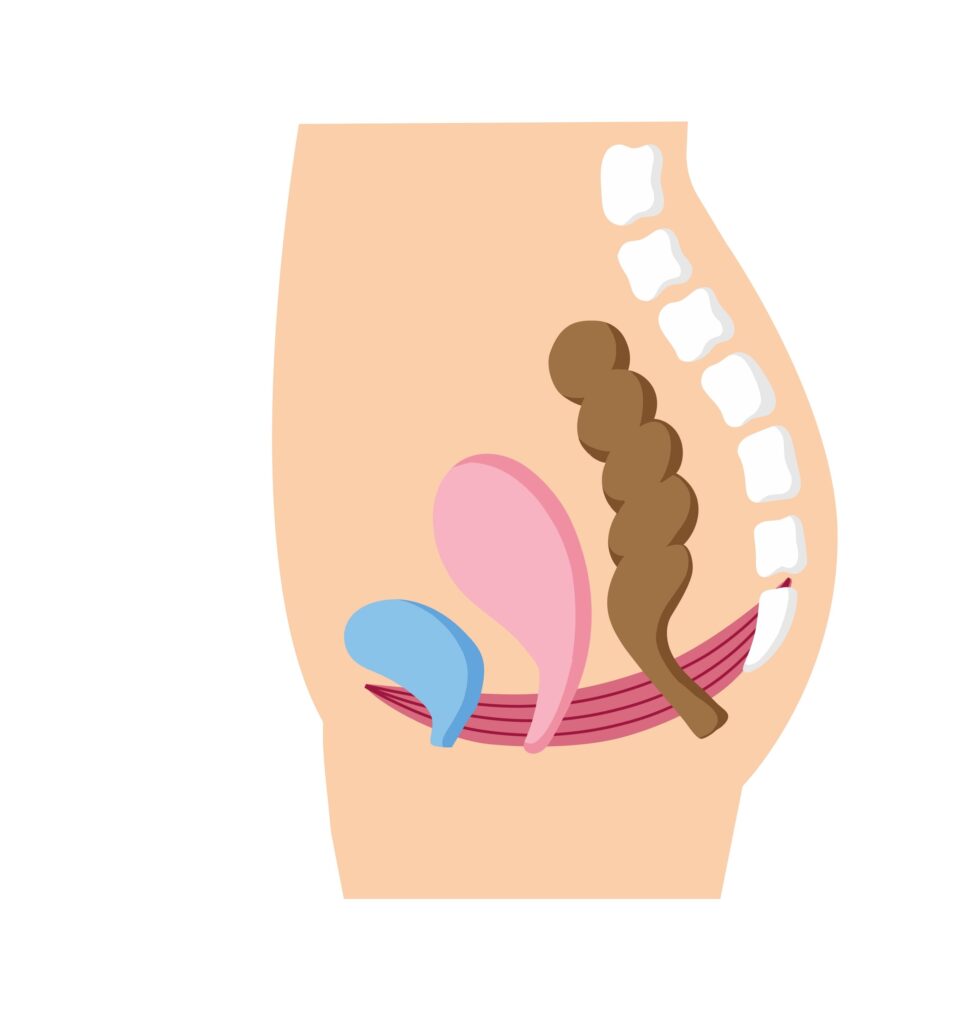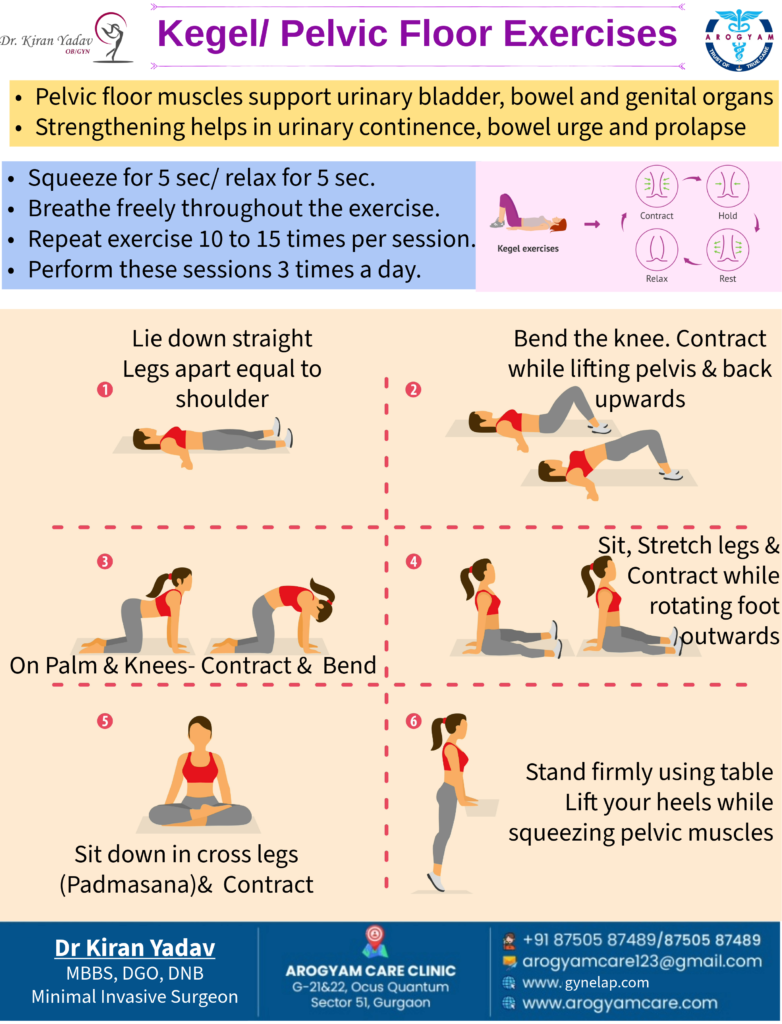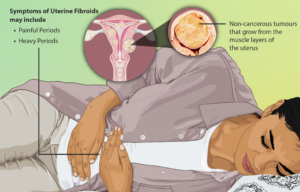What are Kegel Exercises or Pelvic Floor Exercises?
Kegel Exercises, also known as pelvic floor exercises, are essential for women of all ages. These exercises involve the repeated contraction and relaxation of the pelvic floor muscles, which support the bladder, uterus, and rectum. Regularly practicing exercises can lead to numerous health benefits, enhancing both physical well-being and quality of life.

Importance of Exercises
1. Pelvic Health Maintenance:
The pelvic floor muscles are fundamental in supporting the organs located in the pelvic region. With age, pregnancy, childbirth, and other factors, these muscles can weaken. Exercises help maintain their strength and function, preventing issues like pelvic organ prolapse, where one or more of the pelvic organs drop from their normal position.
2. Prevention and Management of Urinary Incontinence:
One of the most significant benefits of exercises is their role in preventing and managing urinary incontinence. This condition, which involves the involuntary leakage of urine, is common among women, especially after childbirth or during menopause. Strengthening the pelvic floor muscles through exercises can significantly reduce or even eliminate this issue.
3. Enhanced Sexual Health:
Strong pelvic floor muscles can lead to increased sexual satisfaction. Exercises enhance muscle tone, which can improve sensation during intercourse and lead to stronger orgasms. Additionally, these exercises can increase blood circulation to the pelvic area, further improving sexual health.
4. Support During Pregnancy and Postpartum Recovery:
During pregnancy, the growing uterus puts extra pressure on the pelvic floor muscles. Performing exercises during pregnancy can help prepare these muscles for the strain of childbirth and reduce the likelihood of urinary incontinence. After delivery, exercises aid in the recovery process by helping to restore muscle tone and function, which may have been stretched or weakened during childbirth.
5. Management of Pelvic Organ Prolapse:
For women at risk of or experiencing pelvic organ prolapse, where the pelvic organs slip down into the vagina due to weakened pelvic muscles, exercises can help manage the condition. Regularly strengthening these muscles can help keep the organs in place and prevent the condition from worsening.
6. Post-Menopausal Benefits:
As women age and go through menopause, the decrease in estrogen levels can lead to a weakening of the pelvic floor muscles. Exercises help counteract this natural decline in muscle tone, reducing the risk of incontinence and pelvic organ prolapse.
How to Incorporate Exercises Into Daily Life:
Routine: The beauty of exercises is their flexibility; they can be done almost anytime and anywhere, whether you’re sitting at your desk, watching TV, or lying in bed. Setting aside time each day, such as during morning routines or before bed, can help make them a regular part of your life.
Consistency: Like any muscle-strengthening exercise, consistency is key. Performing exercises regularly, ideally daily, will provide the best results.
Proper Technique: It’s crucial to ensure that you’re doing exercises correctly to avoid straining other muscles, such as those in your abdomen or thighs. The focus should solely be on the pelvic floor muscles.
Benefits of Exercises for women:
- Improved Bladder Control
- Exercises can help prevent or reduce urinary incontinence by strengthening the muscles that control urine flow. This is particularly beneficial for women who have experienced childbirth or are dealing with stress incontinence.
- Postpartum Recovery
- After childbirth, the pelvic floor muscles can become weakened. Exercises aid in the recovery process, helping to reduce postpartum urinary incontinence and improve overall pelvic health.
- Support During Menopause
- During menopause, some women experience a weakening of the pelvic floor muscles. Regular exercises can help maintain muscle tone, supporting bladder control and vaginal health.
- Prevention of Pelvic Organ Prolapse
How to do exercises:
How to Perform Exercises
- Identify the Right Muscles
- Pelvic floor muscles controls urine and stool and support the pelvic organs
- Perfect Your Technique
- Once you’ve identified the right muscles, tighten your pelvic floor muscles, hold the contraction for five seconds, and then relax for five seconds. Repeat this process 10 times.
- Consistency is Key
- For optimal results, aim to perform exercises three times a day. Gradually increase the duration of each contraction and relaxation as your muscles become stronger.
Common Mistakes to Avoid
- Using the Wrong Muscles
- Ensure you are not tightening your abdominal, thigh, or buttock muscles. Focus solely on your pelvic floor muscles.
- Overdoing It
- Avoid doing exercises too frequently, as this can lead to muscle fatigue and strain. Stick to the recommended routine for best results.
- Holding Your Breath
- Remember to breathe normally while performing exercises. Holding your breath can increase pressure on your pelvic floor muscles.
- Using the Wrong Muscles
When to See a Doctor
If you’re unsure whether you’re performing the exercises correctly or if you experience any discomfort or pain while doing them, it’s advisable to consult a healthcare provider. A professional can provide guidance on proper technique and suggest modifications if necessary.
Incorporating These Exercises Into Daily Life
One of the great advantages of these exercises is that they can be done almost anywhere and at any time, without anyone noticing. Whether you’re sitting at your desk, watching TV, or waiting in line, you can practice strengthening your pelvic floor muscles.
Incorporating exercises for women into your daily routine can significantly improve your pelvic health, enhance sexual function, and prevent various pelvic floor disorders. Whether you are a new mother, approaching menopause, or simply looking to improve your overall well-being, Exercises offer a simple yet effective solution. Start today and experience the transformative benefits of a stronger pelvic floor.






Pingback: Essential Tips for a Healthy Second Trimester of Pregnancy
Great blog post!
I love how you’ve highlighted the importance of Kegel exercises for women of all ages. It’s amazing how something so simple can have such a big impact on pelvic health, from preventing urinary incontinence to aiding postpartum recovery. I didn’t realize Kegels could also improve sexual health—such a bonus!
Do you have any tips on how to stay consistent with these exercises? Sometimes I forget to incorporate them into my day. Would love to hear your suggestions!
Pingback: Gynecological Surgery: Types, Indications, and Recovery - gynelap.com
Real Estate naturally like your web site .
Can I ask a quick question about your site?